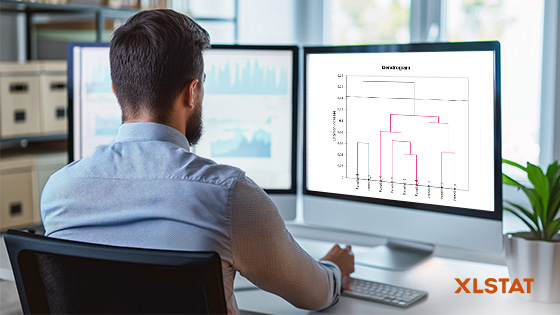
What is RATA Analysis?
RATA (Rate-All-That-Apply) is a survey or sensory evaluation technique used to assess multiple attributes of a product, concept, or experience. It combines elements of both Check-All-That-Apply (CATA) and traditional rating scales to provide more detailed and nuanced feedback.
How Does RATA Work?
Presenting Attributes: Respondents are provided with a list of attributes (e.g., sweet, salty, smooth, fresh, etc.) related to the product or experience being evaluated.
Task for Respondents:
- Respondents first indicate which attributes apply to the product or experience, similar to the CATA method.
- For each attribute selected, respondents then rate the intensity or degree to which the attribute is present using a predefined scale (e.g., a scale from 1 to 7, where 1 is 'Not at all' and 7 is 'Very much').
Data Collection: The data collected provides both a qualitative aspect (which attributes are applicable) and a quantitative aspect (how intense or prominent each selected attribute is).
RATA Example Scenario
Imagine a food company wants to evaluate a new flavor of yogurt. They might ask respondents to rate various attributes like "sweet," "creamy," "tangy," "thick," and "fruity." Several yogurts are presented to respondents.
Step 1: Respondents taste the yogurts and check all attributes that apply (e.g., "sweet," "creamy," "fruity").
Step 2: For each checked attribute, they rate the intensity.
Why Use RATA?
- Combines CATA and rates: RATA gives insights into not just which attributes are perceived by respondents, but also how strongly they perceive each attribute.
- Flexibility: Respondents can skip attributes they feel don’t apply, and then rate the intensity of those they think are relevant – making the task less overwhelming than rating every attribute.
- Detailed Product Profiling: It provides a more comprehensive profile of a product, helping to understand both the presence and prominence of different characteristics.
Where is RATA Used?
- Sensory Evaluation: In the food and beverage industry, RATA is often used to understand how consumers perceive the sensory characteristics of a product such as taste, texture, and aroma.
- Product Development: Companies use RATA to fine-tune product attributes based on consumer feedback, ensuring that a product meets the desired profile.
- Market Research: RATA can be used to assess consumer perceptions of products or experiences, aiding in competitive analysis and brand positioning.
Advantages of RATA
- Efficiency: RATA is less time-consuming for respondents compared to traditional methods where all attributes must be rated, regardless of relevance.
- Rich Data: The combination of selection and rating provides deeper insights, making it easier to prioritize attributes that matter most to consumers.
- Ease of Interpretation: Results from RATA are easier to analyze and interpret, offering clear guidance on how a product is perceived and where improvements are needed.
Building Clusters of Assessors Based on RATA Data
If we asked you if you think you like the same chocolate as everyone else, would you say yes? The answer is no! Because everyone is different! However, we can create clusters of people with similar sensibilities within each cluster.
In a RATA task, which is a very popular sensory task, how do you build up these clusters?
Dr. Fabien Llobell invented an adaptation of CLUSCATA (a popular analysis method devoted to CATA data clustering) to RATA data. The development team coded that in XLSTAT, so now we can build clusters of respondents with RATA data!
Dr. Fabien Llobell presented this new tool at the 2024 Eurosense Conference and the 2024 Lumivero Conference with Professor Sara Jaeger.
Start Using RATA Data Analysis in XLSTAT
RATA is a powerful tool for gathering detailed feedback on multiple attributes of a product or experience. By allowing respondents to both select relevant attributes and rate their intensity, RATA provides a rich dataset that can be used to guide product development, sensory analysis, and marketing strategies.
Get started with powerful RATA analysis in XLSTAT today!
